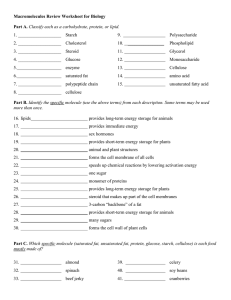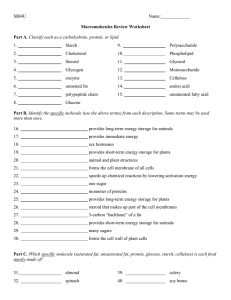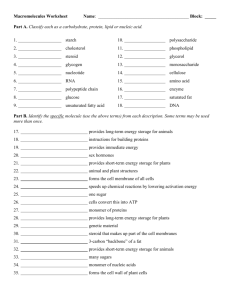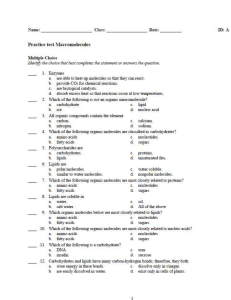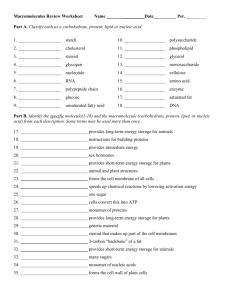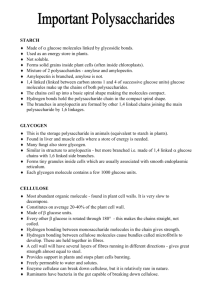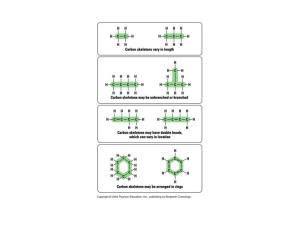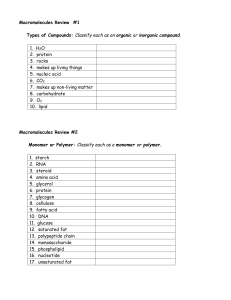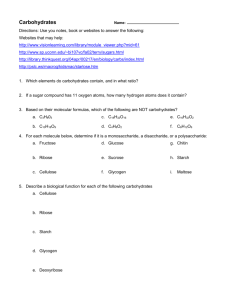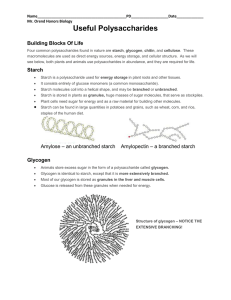3.7-3.8 Warm Up
advertisement
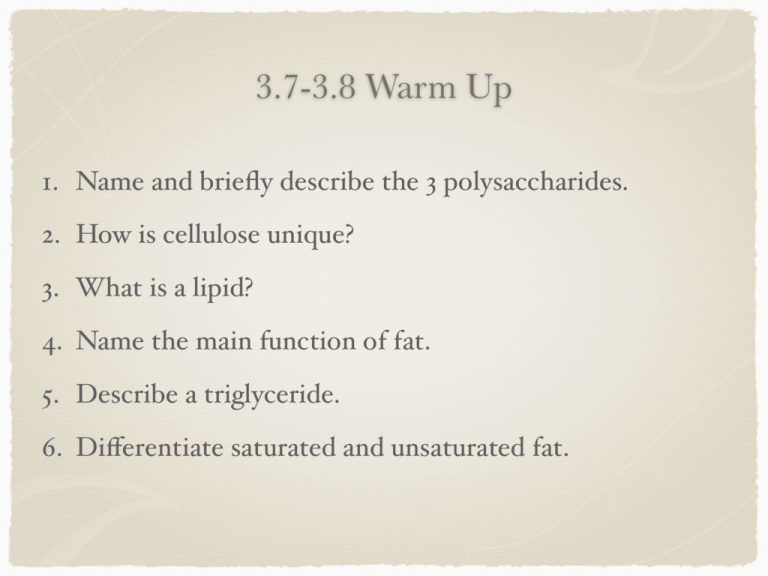
3.7-3.8 Warm Up 1. Name and briefly describe the 3 polysaccharides. 2. How is cellulose unique? 3. What is a lipid? 4. Name the main function of fat. 5. Describe a triglyceride. 6. Differentiate saturated and unsaturated fat. 3.7 Polysaccharides are long chains of sugar units Tell me about starch... an energy storage polysaccharide in plants made entirely of glucose monomers the molecule has a helical shape due to bond angles between glucose units Amylose (one component of starch) What is glycogen? an energy storage polysaccharide in animals identical to starch except that it is more extensively branched most is stored in liver and muscle cells Glycogen in the Liver The Many Branches of Glycogen Describe cellulose most abundant organic compound on Earth it forms a very strong cable-like fibril within the walls that enclose plant cells the fibril is composed of glucose chains that run unbranched and parallel to each other, hydrogen bonds form between the chains Parallel Chains of Cellulose Cellulose Fibers Can you hydrolyze the glucose out of cellulose? no, most animals cannot break apart the bonds holding the glucose molecules together cows and termites have microorganisms in their digestive tracts that break apart the glucose monomers mmmmm....... Cellulose What is fiber? How does it help you? fiber is cellulose in plant foods (oatmeal) as fiber moves through your digestive tract, it pushes everything out with it Starch granules in potato tuber cells Glycogen granules in muscle tissue Cellulose fibrils in a plant cell wall Cellulose molecules Glucose monomer STARCH GLYCOGEN CELLULOSE 3.8 Lipids include fats, which are mostly energy-storage molecules Describe a lipid. a molecule composed mainly of carbon and hydrogen atoms (very few oxygen atoms) contain mostly non-polar covalent bonds hydrophobic What is a fat? Why do you need it? fat is a large lipid made from two smaller molecules: a glycerol fatty acids fat is used primarily for energy storage The making of a Triglyceride Saturated fat Unsaturated fat Saturated Fat most animal fats are saturated (butter, lard) form solids at room temperature these fats can build up in your arteries and restrict blood flow (atherosclerosis) Lard Atherosclerosis Double Whammy Unsaturated Fat most plant oils are unsaturated (corn, olive, vegetable oil) their double bonds act as kinks and prevent the molecules from packing tightly enough to solidify Homework: Read 3.9-3.10 Packet Exercise 4

